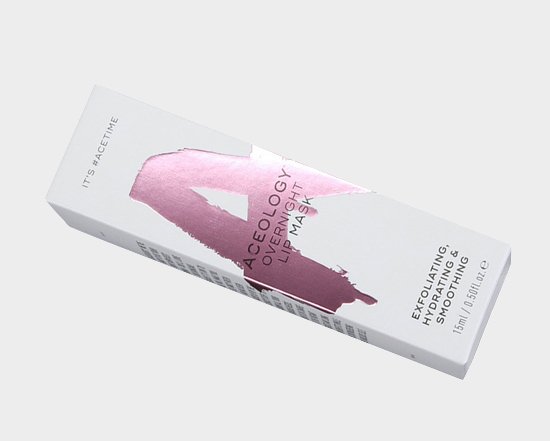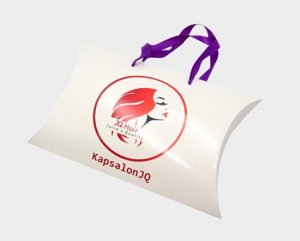Embossing vs. Debossing - Similarities, Differences, and Advantages
Embossing and debossing are custom finishing methods that add depth and elegance to your print product. The embossing creates a raised design imprint on your item, while debossing creates a recessed design indent on the product. Both result in a three-dimensional design surface that makes the print item incredible to touch and feel while also appealing to the eye.

The Process - How Embossing and Debossing Are Done
The primary technical procedures for both embossing and debossing are similar. The preferred design is etched on a metal plate – referred to as ‘A Die’ or ‘A mold”. With the application of heat and optimal pressure, it is then pressed into the print item to create a raised or depressed imprint on the item.
However, there are differences in how the die is used to create either an embossed or debossed design.
How Embossing is done
Two main tools are needed before embossing can be done – a die and the stock. A die is a custom-made metal plate on which the design or image you want to emboss on paper is etched. The stock is the item you want to emboss; it could be paper, cardboard, or even metal. The die is pressed onto the stock, like an ink stamp, leaving a raised imprint of your design on the stock. In embossing, two dies are used – referred to as the ‘die’ and ‘counter-die’ or, in some instances, the male die and the female die.
The procedures to emboss a stock material is itemized below.
#1. Open a new die/ plate/ mold
Anyone who wants to have an item embossed indeed would already have a preferred design or image they plan to emboss on the item. Thus, the first step in embossing is to etch that design on the two dies. The male die would have the design etched onto it, and the female die would have the same design but indented.
#2. Put the plates & stock item in position
The stock item to be embossed is positioned between the male and female dies. The female die is positioned on top of the stock while the male die is positioned below, serving as the counter-die.
#3. Add heat to emboss
Adequate heat and pressure are applied to the dies. The male die is pushed into the female die, with the stock in the middle.
#4. Embossing process done
The male die pushes the stock item into the female die positioned above, thus producing a raised impression on the surface of the stock – an impression that replicates the design etched on both dies. This completes the embossing process.

How Debossing is done
Tools needed for debossing are the same as that for embossing. You need your stock and a die. Only this time, you only need one die, the male die. And for the process, it’s much similar to that of embossing.
#1. The preferred design is etched onto the male die.
#2. Stock item to be embossed is placed on a flat surface.
#3. Heat is applied to the die and then stamped onto the stock.
#4. The heat and pressure push the design etched on the die into the stock, leaving a recessed imprint that replicates the design. This completes the debossing process.

Types of Embossing/Debossing Techniques
Blind Emboss
Blind embossing (or debossing) does not include using ink or foil on the embossed area. This means the design is imprinted on the stock without a unique coloration or pigmentation different from the other parts of the stock. This embossing technique provides a subtle, clean, and simple aesthetic often seen on book jackets, hoodies, and t-shirts.
Registered Emboss
In this process, the design is printed with ink or foil before it is raised. The embossing process then raises (or indents, as the case may be) the ink or foil design resulting in an embossed design that is unique from other parts of the stock item. For example, you can have your LOGO with hot stamping, then emboss or deboss the foil print LOGO position.
Combination Emboss
This combines embossing and hot stamping in a single operation. It involves aligning the foil over the etched design to create a foil emboss. The die used, called a combination die, has sharp edges that cut away cleanly excess foil from the embossed area.
Pastelling Emboss
A combination die is also used in this process, adding pearl finishes or similar pastel foil finishes to the embossed design. This results in a unique, soft contrasting appearance on the surface of the stock.
Glazing Emboss
This results in an embossed design surface that has a shiny, polished appearance. The glazing emboss process works best with dark colors where the polished effect is much more apparent.
Scorching Emboss
In this process, the die is heated to very high temperatures beyond the normal range. This high heat creates a scorched effect that gives the stock an antique and shaded appearance.

Differences Between Embossing and Debossing
Embossing and Debossing, as we should have garnered by now, have more similarities than differences. Here we take a look at the few differences between the two processes.
#1. Embossing leaves a raised imprint, while Debossing leaves an indented imprint.
#2. Embossing needs two dies – a die and a counter-die, while debossing typically requires one. This also makes embossing more expensive than debossing.
#3. Debossing does not tamper with the back of your stock item, as the die is only stamped on one side. Embossing, however, interferes with both sides as both dies are placed on either side of the stock.
What Embossing and Debossing Offers You
There are some benefits peculiar to each one of debossing and embossing; we’ll talk about that subsequently. There are general advantages to applying these finishing techniques to your stock items.
Increased Visual and Tactile Appeal
The three-dimensional effect created by embossing and debossing adds a perception of depth, which is missing in most other contemporary finishing techniques. These designs are also very tactile and stimulating to touch.
Enhanced Perception of Value
Embossing and Debossing result in a design surface that looks premium and luxurious, thus increasing the perceived value of the product on which the designs are done.
Highlight Logos and Other Important Details
Embossed and debossed designs appear glaring and evident on whatever item they are done on; this captivates the viewer’s attention and causes them to observe the embossed/debossed image or text more closely.

Benefits of Embossing
#1. The design leaps off the surface, visually appealing to the viewer as the raised imprint makes it more eye-catching and attractive.
#2. Embossing makes it easier to replicate even the subtlest and most intricate designs in high quality on the stock item because it is easier to see. After all, it is raised from the surface of the stock.
#3. It is also easier to apply foil on embossed designs. This is because the design area we want to apply foil to is raised; this makes it easier to avoid accidentally impacting the rest of the stock.
Benefits of Debossing
#1. Debossed designs are usually very durable. They last long and retain their shape because they are recessed from the stock’s surface, shielding them from the wear and tear effects the other part of the stock item is vulnerable to.
#2. It is easier to apply ink on debossed designs. Their recessed nature makes it easy for them to retain ink till it dries without spilling on the rest of the stock’s surface.
#3. Unlike embossed designs that ‘leap’ off the surface, debossed designs sink beneath them. Its recessed nature produces a pronounced perception of depth and a three-dimensional appearance.
Applications of Embossing/Debossing
Braille
Embossing and Debossing leave imprints, usually raised and indented, respectively. This results in a tactile design that can be felt, explored, and understood by touch. You can adopt this design process for print items meant for blind users. Design text or braille can be embossed on such items so they can be read simply by touch.
High-end Product Packaging
Embossed or debossed designs often exude a premium and very luxurious aesthetic and, as such, are adopted to package expensive and high-end goods. Luxury cosmetic products like perfumes, bespoke clothing items, and even music CD albums now have embossed designs on their packaging to communicate the product’s value within. With embossing or debossing on the surface, it will bring your cosmetic packaging to a higher level.
Business and Branding
Embossing and debossing result in a three-dimensional design that quickly catches the eye. This is why they are implemented to finish business stationeries like labels, letterheads, stationeries, business cards, and envelopes. Logos are embossed on these stationeries to make them very glaring and visible to whoever sees these business items, thus creating or reinforcing the business’ brand and image.
Advertising
The advertising industry is premised on getting people’s attention, and the eye-catching nature of embossed or debossed designs comes in very handy. Promotional banners or posters can contain embossed designs and images to garner people’s attention and reinforce the advertised message in their minds.

Conclusion
Embossing and Debossing are more similar than they are different. Both create high-quality and premium aesthetic effects on whatever item they are crafted on. They create tactile and visually appealing three-dimensional effects that attract people’s attention. These highly coveted properties result in their application in many industries – from packaging and manufacturing to the corporate business world. There are no other finishing options that could replicate most of the benefits of embossing and debossing.





